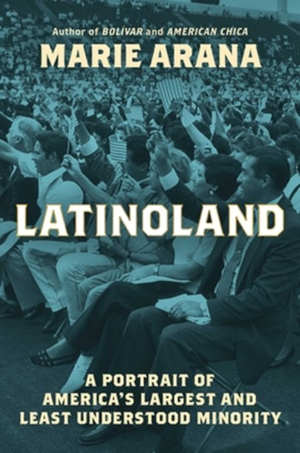Marie Arana LatinoLand recensie en informatie boek over de Latino’s in Amerika de grootste en mist begrepen minderheid. Op 20 februari 2024 verschijnt bij uitgeverij Simon & Schuster het boek LatinoLand, geschreven door de in Peru geboren schrijfster Maria Arana. Hier lees je informatie over de inhoud van het boek, de schrijfster en over de uitgave. Er is geen Nederlandse vertaling verkrijgbaar op aangekondigd.
Marie Arana LatinoLand recensie
- “The celebrated Arana unpacks one of the most contentious demographic categories in the U.S. In her sympathetic snapshots and deeply researched reporting, Arana tells a compelling story of Latinos as ‘mutable, uncertain creatures, protean in our very selves—the bewildered offspring of centuries of cross-fertilization and chance.’” (Booklist)
- “An impressively wide-ranging overview of the turbulent history of Latine people in America. . . . Ably blends historical research with insightful anecdotes. . . . Arana has a fascinating, complex, and deeply personal story to tell, and she narrates it with abundant verve and intelligence.” (Kirkus Reviews)
- “Marie Arana does something beautiful in this book: she captures all the strands and weaves that form the fabric of the one-fifth of our nation she calls LatinoLand. This burgeoning population contains many different narratives, as she shows, but there are a number of commonalities. Her book not only helps explain LatinoLand but also America itself.” (Walter Isaacson, schrijver)
LatinoLand
A Portrait of America’s Largest and Least Understood Minority
- Auteur: Marie Arana (Verenigde Staten)
- Soort boek; journalistieke non fictie
- Taal: Engels
- Uitgever: Simon & Schuster
- Verschijnt: 20 februari 2024
- Omvang: 576 pagina’s
- Uitgave: gebonden boek / ebook / luisterboek
- Prijs: $32.50 / $16.99 / $29.99
- Boek bestellen bij: Bol / Libris
Flaptekst van het boek van Maria Arana over Latino’s in Amerika
A sweeping yet personal overview of the Latino population of America, drawn from hundreds of interviews and prodigious research that emphasizes the diversity and little-known history of our largest and fastest-growing minority.
LatinoLand is an exceptional, all-encompassing overview of Hispanic America based on personal interviews, deep research, and Marie Arana’s life experience as a Latina. At present, Latinos comprise 20 percent of the US population, a number that is growing. By 2050, census reports project that one in every three Americans will claim Latino heritage.
But Latinos are not a monolith. They do not represent a single group. The largest numbers are Mexicans, Puerto Ricans, Dominicans, Salvadorans, and Cubans. Each has a different cultural and political background. Puerto Ricans, for example, are US citizens, whereas some Mexican Americans never immigrated because the US-Mexico border shifted after the US invasion of 1848, incorporating what is now the entire southwest of the United States. Cubans came in two great waves: those escaping communism in the early years of Castro, many of whom were professionals and wealthy, and those permitted to leave in the Mariel boat lift twenty years later, representing some of the poorest Cubans, including prisoners.
As LatinoLand shows, Latinos were some of the earliest immigrants to what is now the US—some of them arriving in the 1500s. They are racially diverse—a random fusion of White, Black, Indigenous, and Asian. Once overwhelmingly Catholic, they are becoming increasingly Protestant and Evangelical. They range from domestic workers and day laborers to successful artists, corporate CEOs, and US senators. Formerly solidly Democratic, they now vote Republican in growing numbers. They are as varied culturally as any immigrants from Europe or Asia.
Marie Arana draws on her own experience as the daughter of an American mother and Peruvian father who came to the US at age nine, straddling two worlds, as many Latinos do. Latinoland unabashedly celebrates Latino resilience and character and shows us why we must understand the fastest-growing minority in America.

